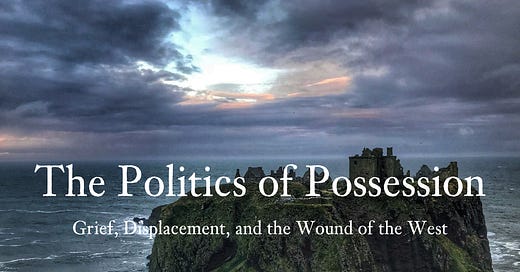In Part I of The Politics of Possession, we established that possession is an anthropological, animistic, and psychological fact.
Carl Jung helped us see how entire nations can be collectively possessed by their own shadow, and by the archetypal forces that dwell there, evidenced by his exploration of the spirit of Wotan possessing Hitler and the German people in the era of World War II.
Today, if we take a step back, and unburden ourselves from our material-reductionist prejudices, we can all likely identify instances of possession by archetypal forces in people close to us, or in the culture at large.
But if there is a possessee, one who is possessed, there must then be a possessor–the one who possesses.
If you’re still with me, two questions now arise: who (or what) is doing the possessing? And to what end?
In the context of collective possession that we’ve been exploring, which is primarily from a Jungian and animistic lens, the possessor here is not some outside entity, an exotic or “dark” force that we are unrelated to, and can thereby claim innocence of. We all know better than that. It is far more likely that the who or what in question has its origins much closer to the home soil of our collective cultural psyche.
No ayahuasca ceremony can fix what our culture is possessed by. No amount of meditation will dissolve it. No quantity of psychotherapy or somatic healing can mend it. What we are possessed by is as familiar as our own flesh and blood. It is the water we are swimming in, but cannot see. It is not located in the etheral or imaginal realm, but in the heartbreakingly tangible reality we inhabit every day.
We are possessed by the consequences of our culture.





